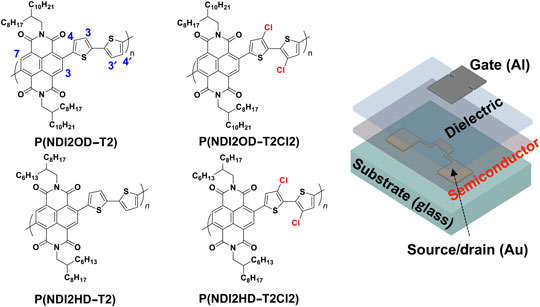No CrossRef data available.
Published online by Cambridge University Press: 11 February 2016

We demonstrate here the design, synthesis and characterization of two new chlorinated polymers, P(NDI2HD–T2Cl2) and P(NDI2OD–T2Cl2) based on N,N′-difunctionalized naphthalene diimide (NDI) and 3,3′-dichloro-2,2′-bithiophene (T2Cl2) moieties. Our results indicate that organic thin-film transistors (OTFTs) based on these new chlorinated polymers exhibit electron mobilities approaching 0.1 cm2V−1s−1 (I on:I off ~ 106–107), with far less ambipolarity due to their lower highest occupied molecular orbital energies, and they are more stable under deleterious high-humidity conditions (RH ~ 60%) and upon submersion in water, compared with those fabricated with the parent non-chlorinated polymers. In addition, OTFTs fabricated with the new chlorinated polymers exhibit excellent operational stabilities with <3% degradations upon bias-stress test.